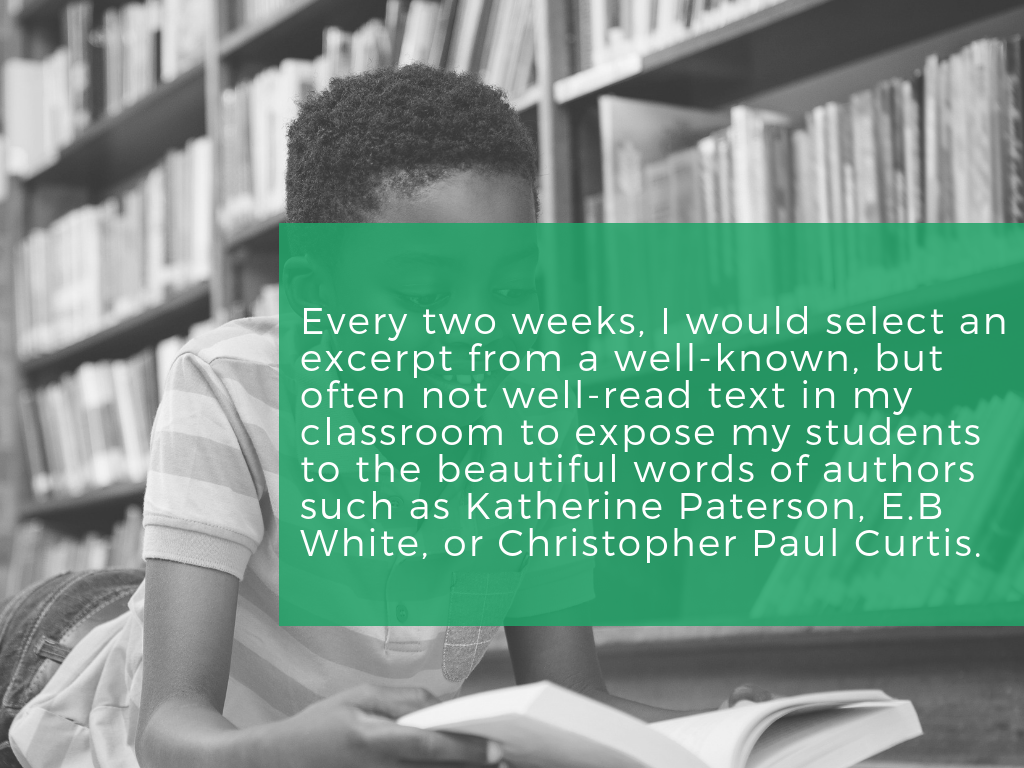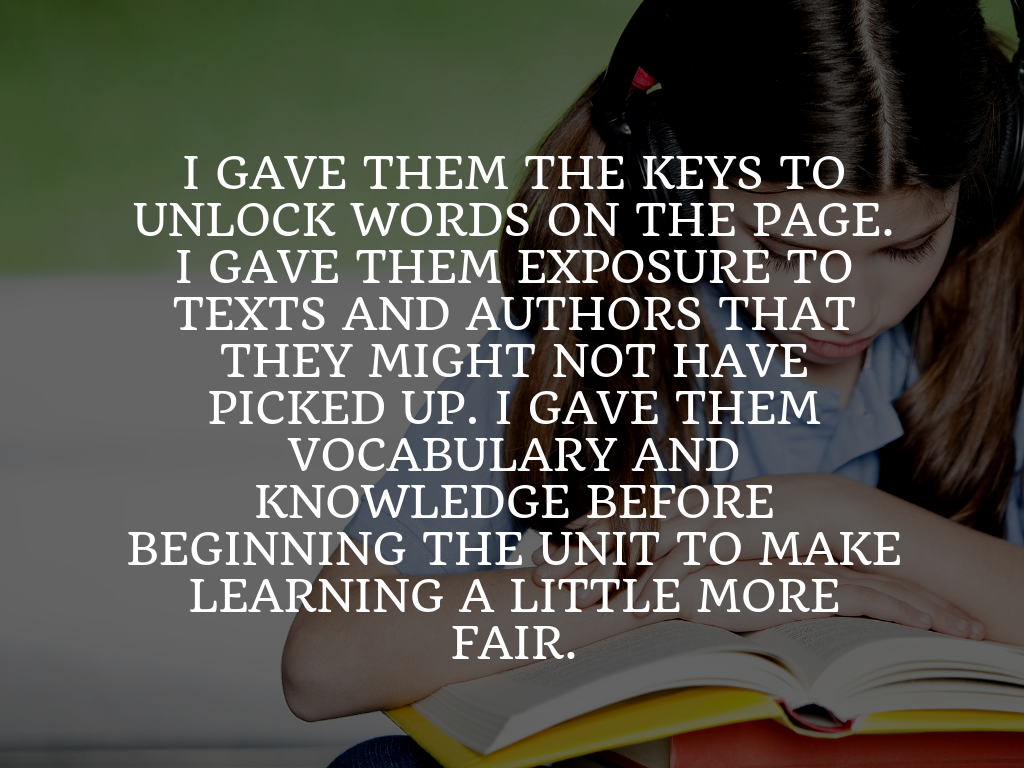Looking out in front of me are 30 pairs of eager eyes. It did not matter what they had for breakfast, how they got to school, or the friendship issue they had at lunch, because I had captivated them. As I shared an excerpt of Because of Winn Dixie in my third grade classroom in Harlem, I realized for the first time in nine years of teaching, I had reached every student. I was not doing something creative or funny or magical, but instead, I gave them access to a rich complex text… a text that for the next two weeks, all of the students wanted to read, whether independently, with an adult, with a partner, or listening and following along with the audio version. My once reluctant readers were eager to curl up during independent reading. I had built a love of reading in my room, one that caused the students to seek out other Kate D’Camillo books and on that day, my teaching practice changed forever. I stopped caring about levels, “ability,” or interest, and started caring about high-quality, complex texts.
Every two weeks, I would select an excerpt from a well-known, but often not well-read text in my classroom to expose my students to the beautiful words of authors such as Katherine Paterson, E.B White, or Christopher Paul Curtis. I selected texts that would lead my students to read other texts by the author or texts that would help me make other recommendations to my students. My room of students became lovers of books.
While the benefits far outweighed the pushback I may have gotten for “not following the curriculum,” this process did not come without its personal challenges. The internal dialogue sounded like: “How do I select the most impactful excerpt from the text?” How long should it be?” “Would this make my students better readers and writers?” This took time and deliberate selection. It was not my favorite moment in the book or the problem of the story. Within those classroom walls, I picked a paragraph (or a page or a few pages) that would build knowledge, either content knowledge or structural knowledge.
I used Charlotte’s Web when teaching dialogue to my students. I selected an excerpt that showed the vagueness of who was speaking. We studied the craft of E.B. White to understand who was talking and how the author showed us that. This began to unlock the doors to understanding dialogue and applying that to their own writing. In Social Studies, when studying about the history of New York City and Harlem, we analyzed parts of the poem, “Harlem,” by Walter Dean Myers, to build our background knowledge and vocabulary before our studies officially began by analyzing the text and the pictures. What did it mean when Walter Dean Myers said, “Harlem was a promise of a better life, of a place where a man didn’t have to know his place simply because he was black”? That was the question we pondered for several days.
What started as an experimental lesson in my classroom ended up being the greatest gift I have ever given a group of students. I gave them the keys to unlock words on the page. I gave them exposure to texts and authors that they might not have picked up. I gave them vocabulary and knowledge before beginning the unit to make learning a little more fair. What was once just an activity to select good texts based on the Lexile, the qualitative features, and the ability to say I was reading complex texts, was now an impactful decision I made regularly to provide students with the freedom to choose different authors, learn new vocabulary words, and gain more knowledge.
Starting on this journey was not easy and is something I am continuing to refine each year with each new class of students. I feel blessed to have come across the close reading lesson on achievethecore.org on Because of Winn Dixie since that has impacted my teaching and now coaching of other teachers so they can also help unlock words that have kept so many children back. When beginning this new chapter of your teaching, use examples already out there: think of texts and authors you want your students to be reading, and identify the parts of the text that will either grow your students’ background knowledge or will help them have a better understanding of the literature. The Common Core State Standards, and the adaptations in the states over the years, have one goal in mind and that is to help ALL students learn no matter who they are or where they live. Selecting excerpts for close reading is one type of instruction teachers can do to transform their classrooms into rooms full of readers and more importantly learners.


















You are truly a gift to your students…so proud you are one of mine!! Keep writing and inspiring young teachers and students. You are amazing!
Hi Carolyn
What a great blog! And what a lucky bunch of kids. And for me so nice to hear as I wrote the atc lesson for that and always loved it and the book. We have very few exemplars for 3rd or 4th grade, what I’ve told teachers to do is use the texts in the Read Aloud Project which are fabulous and copy and print brief excerpts which is legal. Keep up the good work.